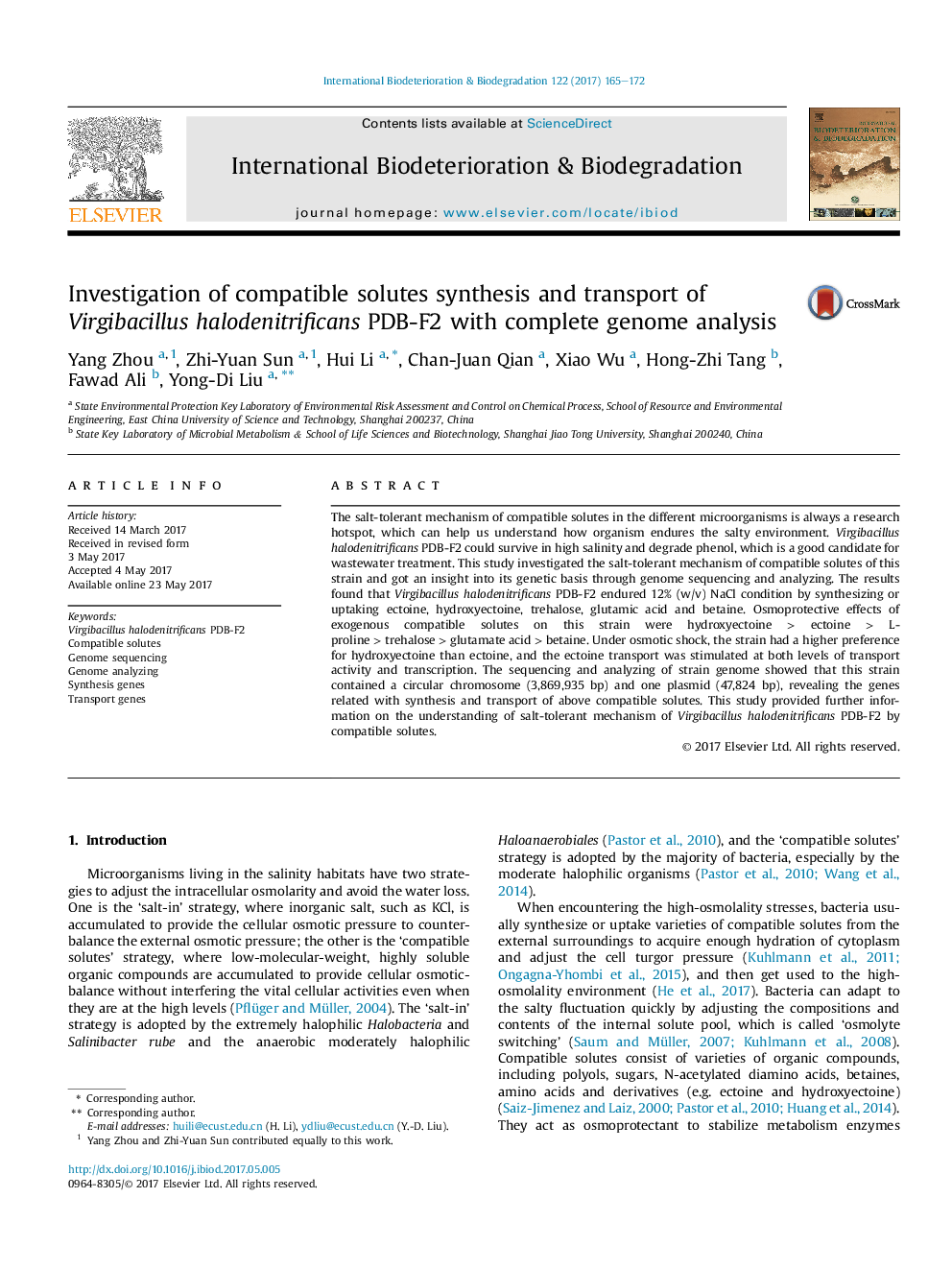| Article ID | Journal | Published Year | Pages | File Type |
|---|---|---|---|---|
| 5740365 | International Biodeterioration & Biodegradation | 2017 | 8 Pages |
â¢The strain synthesized and uptook various compatible solutes to resist high salty.â¢The strain preferred hydroxyectoine than ectoine under osmotic shock.â¢Ectoine transport was stimulated at transport activity and transcription level.â¢The related synthesis and transport genes were identified by genome analyzing.
The salt-tolerant mechanism of compatible solutes in the different microorganisms is always a research hotspot, which can help us understand how organism endures the salty environment. Virgibacillus halodenitrificans PDB-F2 could survive in high salinity and degrade phenol, which is a good candidate for wastewater treatment. This study investigated the salt-tolerant mechanism of compatible solutes of this strain and got an insight into its genetic basis through genome sequencing and analyzing. The results found that Virgibacillus halodenitrificans PDB-F2 endured 12% (w/v) NaCl condition by synthesizing or uptaking ectoine, hydroxyectoine, trehalose, glutamic acid and betaine. Osmoprotective effects of exogenous compatible solutes on this strain were hydroxyectoine > ectoine > L-proline > trehalose > glutamate acid > betaine. Under osmotic shock, the strain had a higher preference for hydroxyectoine than ectoine, and the ectoine transport was stimulated at both levels of transport activity and transcription. The sequencing and analyzing of strain genome showed that this strain contained a circular chromosome (3,869,935 bp) and one plasmid (47,824 bp), revealing the genes related with synthesis and transport of above compatible solutes. This study provided further information on the understanding of salt-tolerant mechanism of Virgibacillus halodenitrificans PDB-F2 by compatible solutes.
